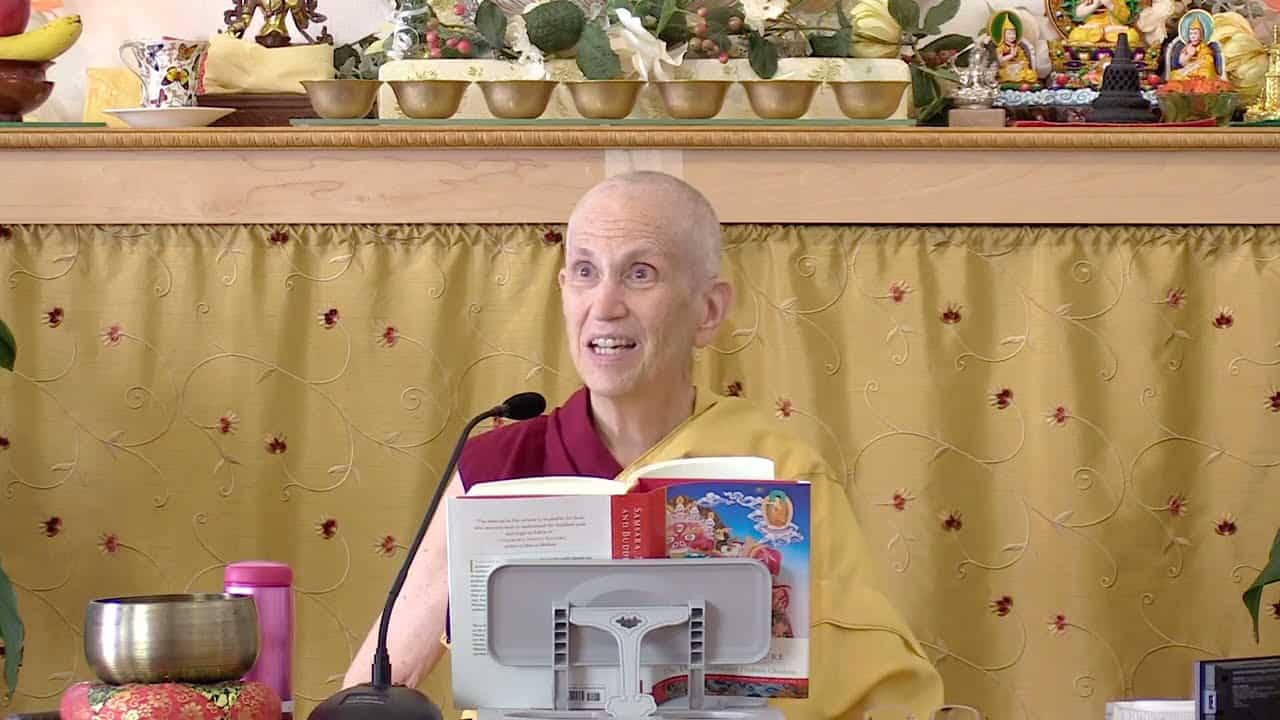Realms of existence
13 Samsara, Nirvana, and Buddha Nature
Part of an ongoing series of teachings (retreat and Friday) based on the book Samsara, Nirvana, and Buddha Nature, the third volume in The Library of Wisdom and Compassion series by His Holiness the Dalai Lama and Venerable Thubten Chodron.
- Desire, form and formless realms
- Four levels of meditative stabilization and four deeper states of single-pointed concetration
- Realms are not projections of mind, rebirth there is not eternal, not reward or punishment
- Division into six classes
- Gods or devas, anti-gods or asuras, human beings, animals, hungry ghosts and hell beings
- Division in terms thirty-three classes of beings
- Four formless, eighteen form, six devas, one asura
- Pure abodes and who are reborn in those realms
- Description of certain types of beings
- Causes for rebirth in different realms and certain physical and mental characteristics of beings
Samsara, Nirvana, and Buddha Nature 13: Realms of Existence (download)
Contemplation points
- When considering all the different realms and classes of existence, what makes the human realm ideal for Dharma practice?
- Consider: none of the realms are rewards or punishments. They are all simply results of our actions, our karma. It’s just cause and effect.
- Consider one or two points you heard that really hit home, came alive for you, or clarified some confusion you have had in regards to one or more of the 4 truths- duhkha, origin, cessation, paths. In what way will these points help motivate you and bring more focus to your practice?
- How might a deeper understanding of these points provide a larger, more realistic perspective for your daily life (relationships, situations etc.)? How will they support your development of compassion, wisdom, and bodhicitta?
Venerable Thubten Chodron
Venerable Chodron emphasizes the practical application of Buddha’s teachings in our daily lives and is especially skilled at explaining them in ways easily understood and practiced by Westerners. She is well known for her warm, humorous, and lucid teachings. She was ordained as a Buddhist nun in 1977 by Kyabje Ling Rinpoche in Dharamsala, India, and in 1986 she received bhikshuni (full) ordination in Taiwan. Read her full bio.


